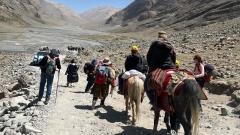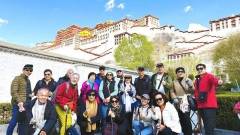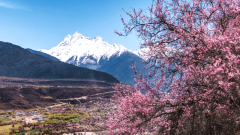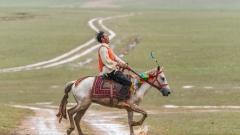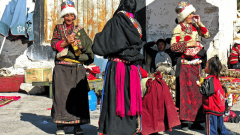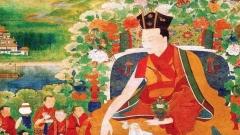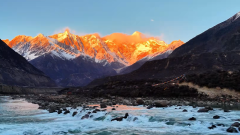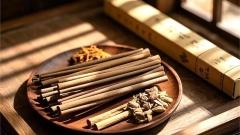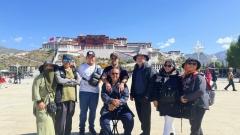Among Tibet’s many vibrant traditions, the Butter Lamp Festival stands out as one of the most visually captivating and spiritually meaningful. Held annually on the fifteenth day of the first Tibetan month, the festival transforms the holy city of Lhasa into a sea of flickering lights. Monasteries, temples, and public squares glow with thousands of hand-crafted butter lamps, while devotees gather to pray, celebrate, and honor their faith. For travelers seeking an authentic cultural experience, the Butter Lamp Festival offers an unforgettable window into Tibetan life and spirituality.
The Origins of the Butter Lamp Festival
The Butter Lamp Festival, also known as Chunga Choepa, traces its roots back to the 15th century. It was established under the guidance of Je Tsongkhapa, the revered founder of the Gelugpa school of Tibetan Buddhism. The festival originally commemorated his great deeds and his deep dedication to the Buddha’s teachings.
Over time, the practice of offering butter lamps became symbolic of dispelling darkness and ignorance while cultivating wisdom and compassion. Each lamp lit during the festival represents an offering of light to the Buddha, a way of illuminating both the physical world and the inner mind.
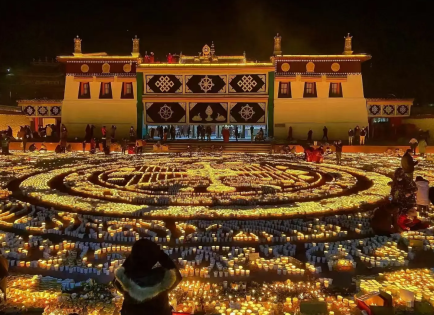
Cultural and Religious Significance
In Tibetan Buddhism, light is one of the purest forms of offering. Butter lamps are not only physical objects but also spiritual symbols. Lighting them is believed to bring merit, remove obstacles, and foster clarity of mind.
During the festival, monks chant sutras, conduct rituals, and lead prayers that emphasize compassion and enlightenment. For lay Tibetans, lighting lamps is a personal act of devotion, reflecting wishes for peace, prosperity, and spiritual growth. The entire celebration reinforces the community’s collective identity and devotion to Buddhism.
The Main Celebrations and Rituals
1. Monastery Ceremonies
In Lhasa, the most renowned celebrations take place around Jokhang Temple, the spiritual heart of Tibet. Monks prepare elaborate butter lamps in varying sizes, from small individual lights to grand sculptures several meters tall. Rituals and prayers accompany the lighting, filling the temple with sacred chants.
2. Butter Sculptures
One of the festival’s most remarkable features is the display of intricate butter sculptures. Skilled artisans spend weeks creating detailed figures of deities, animals, and symbolic motifs, all made from colored butter. These sculptures are not only artistic masterpieces but also offerings to the divine.
3. Public Festivities
As night falls, Barkhor Street and surrounding areas come alive. Thousands of butter lamps illuminate the streets, and crowds of Tibetans and pilgrims gather to circle the Jokhang Temple. Singing, dancing, and communal celebrations continue late into the night, creating an atmosphere of joy and reverence.
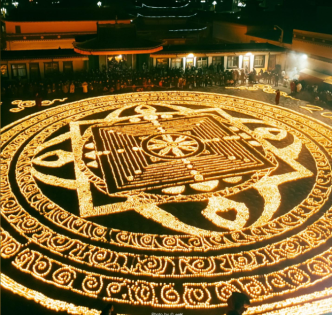
The Visual Magic of the Festival
The Butter Lamp Festival is often described as one of the most photogenic moments in Tibet. The golden glow of countless lamps against the cold winter night sky creates a surreal ambiance. The contrast of flickering flames with the darkened alleys of Lhasa gives visitors the impression of stepping into a timeless spiritual realm.
Photographers are drawn to the visual drama: the soft illumination of temple walls, the colorful butter sculptures, and the devotion etched on the faces of worshippers. For many travelers, this is not just a festival but a profound sensory and emotional experience.
Experiencing the Festival as a Visitor
For travelers, attending the Butter Lamp Festival is both a privilege and a responsibility. The event is deeply religious, and respecting local customs is essential. Here are some tips for experiencing the festival respectfully and meaningfully:
-
Dress Modestly: Warm clothing is necessary in February, but it should also be respectful. Avoid overly casual or revealing attire.
-
Follow Local Etiquette: Always walk clockwise around temples and stupas, and never touch religious objects unless invited.
-
Photography Considerations: While the festival is visually stunning, always ask for permission before photographing individuals.
-
Prepare for the Cold: Lhasa’s winter nights are chilly, so bring layered clothing, gloves, and a thermos with hot tea.
-
Book in Advance: The festival draws pilgrims from across Tibet, so accommodations can fill quickly. Travel agencies such as China Dragon Travel can assist in arranging festival-focused tours, accommodations, and permits.
Travel Tips and Best Time to Go
The Butter Lamp Festival typically falls in February or early March, depending on the Tibetan lunar calendar. This period is part of Tibet’s winter season, which is less crowded and more affordable compared to summer months.
Since visiting Tibet requires a special travel permit, foreign travelers must book tours through registered travel agencies. With its experience in cultural and festival tours, China Dragon Travel provides tailored itineraries that allow visitors to immerse themselves in the Butter Lamp Festival while also exploring other highlights of Lhasa and beyond.
Why the Butter Lamp Festival Matters
The Butter Lamp Festival is more than a tourist attraction; it is a living tradition that showcases Tibet’s deep spiritual roots. It reminds participants and visitors alike of the universal longing for light, hope, and wisdom. Witnessing this event is not only an opportunity to appreciate Tibetan culture but also a chance for personal reflection.
For Tibetans, the lamps symbolize faith, resilience, and the continuity of tradition. For visitors, the festival becomes a profound journey of discovery—into a culture, a religion, and perhaps even into themselves.
Conclusion
The Butter Lamp Festival is one of Tibet’s most enchanting celebrations, blending artistry, devotion, and communal joy. From the glowing lamps that light up Lhasa’s night sky to the intricate butter sculptures crafted with devotion, the festival offers an unforgettable experience.
For those who dream of exploring Tibet’s cultural heart, attending the Butter Lamp Festival provides a rare glimpse into traditions that continue to thrive in the modern world. With guidance from experienced operators like China Dragon Travel, travelers can enjoy not only the festival itself but also the timeless landscapes and spiritual wonders of Tibet.



